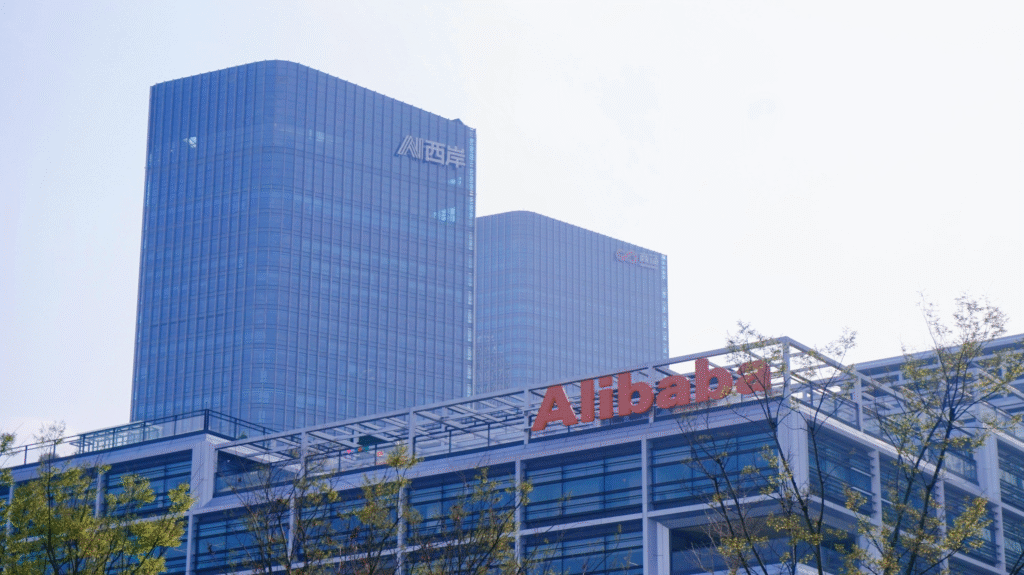Alibaba has reached another critical chapter in its lengthy digital journey, showing that even in a highly competitive and dynamic Chinese market, it still has the power to surprise analysts. The company’s latest quarterly performance reflects both resilience and reinvention. The headline numbers show a mix of gains and losses, but the overall trend is toward a business that is heavily focused on faster delivery and ambitious AI projects. These shifts may define not just Alibaba’s future, but also the broader landscape of digital commerce in China.
Alibaba’s quarterly revenue of 247.80 billion yuan was higher than what the market expected and showed how deeply the company’s ecosystem is becoming a part of the daily lives of millions of people. For a long time, Alibaba’s story has been about how big it is, how it handles logistics, and how well it combines online and physical shopping. Yet what stands out today is how the brand is turning speed into a defining competitive edge. The company’s push into one-hour delivery has resonated strongly with shoppers who have grown accustomed to convenience as a baseline expectation rather than a luxury. Whether it’s groceries, basics, or impulse purchases, the promise of near-instant fulfilment provides a layer of reliability that easily influences client loyalty.
Even with this surge in revenue, the company’s net profit tells a different story. Profit plummeted by 53 percent, a dramatic decline that underscores the heavy expenses necessary in staying relevant in an era where customer demands appear to climb by the month. Despite this sharp drop, the profit figure still surpassed analysts’ forecasts. For long-time followers of Alibaba, this moment feels familiar. The company has never hesitated to lean into aggressive spending during times of transformation, valuing long-term positioning over short-term margins. This strategy has worked for them in the past, but the stakes are definitely higher now.

Investors appeared cautiously optimistic when trading opened in the United States, with Alibaba’s shares rising 2 percent in a market session marked by fluctuations. That early uptick mirrors the broader sentiment surrounding the company: a recognition that Alibaba’s growth engines are still active, even if the path forward is costlier and more complex than before.
One of the most competitive battlegrounds reshaping China’s retail economy is the world of instant retail, often referred to as quick commerce. In this case, speed is key, and big companies are spending a lot of money to make delivery times shorter. There is a lot of rivalry in this field, and costs are expensive, so making money can seem far away. Yet Alibaba continues to advance confidently, convinced that customer behaviour is evolving toward immediacy and that being a leader in this field would pay off in the long term. The development of competitors who want to take over the same loyal customers who have long relied on Alibaba’s platforms is also adding to the pressure to do so.
Alibaba has also put more money into artificial intelligence, in addition to quick commerce. The company has consistently positioned itself near the forefront of China’s AI innovation, integrating advanced capabilities into everything from search recommendations to logistics optimization. Earlier this year, the company unveiled its plan to dedicate 380 billion yuan over three years to AI and cloud computing. It is a staggering sum, but one that underscores how central AI has become to Alibaba’s strategic blueprint. As customer demand grows and supply networks get more sophisticated, AI is no longer a side technology. It is the engine that fuels customisation, efficiency, prediction, and ultimately consumer trust.
In the most recent earnings call, CEO Eddie Wu reinforced this commitment, signalling that investment in AI will continue, even if it meant stretching the company’s resources. He stressed that persistent supply chain difficulties make it practically impossible to slow down innovation. Wu noted that satisfying customer expectations now involves ongoing development behind the scenes, from data processing to inventory planning. His message was clear: Alibaba is in a phase where investing aggressively is the only way to stay ahead.
What makes this tilt toward AI particularly interesting is how neatly it merges with Alibaba’s existing capabilities. For years, the corporation has established a large data ecosystem built on customer interactions across shopping, entertainment, payments, and logistics. AI makes it possible to use this huge amount of information more wisely, giving shoppers exactly what they need before they even know they need it. This level of precision in predictions is soon becoming the norm in online shopping, and Alibaba has a huge edge since it has so many resources.
However, the stakes are great. Putting billions on AI and fast retail takes time, and the rewards are not assured or immediate. The Chinese economy, however steady, is evolving in ways that necessitate ongoing adaptation. People’s buying habits are changing, city living is changing, and rivals are getting bolder. The area that Alibaba used to dominate with little effort is now full of innovators who want to shake things up. Yet there remains something consistent about Alibaba’s approach: an unwavering confidence that success comes from reinvention rather than caution.
The company’s revenue shows that the market still recognizes what Alibaba has accomplished. The shopping experience is world-class, the logistics network is unrivaled, and the brand continues to wield cultural and commercial significance across China. But keeping that impact means finding the right mix between growth and efficiency. The decline in profit is a reminder that even giants must cope with the financial reality of reinvention.
As Alibaba puts more money into AI and fast delivery, analysts and customers still have a lot of questions. Will the big spending bring back profit margins in other ways? Can Alibaba stay on top in a field where competition is strong and new ideas come and go quickly? And maybe most crucially, how will the corporation change to meet the needs of China’s new generation of digital shoppers?












